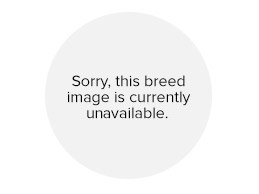Shikoku
Last updated: 10 Aug 2022
A breed standard is the guideline which describes the ideal characteristics, temperament, and appearance of a breed and ensures that the breed is fit for function with soundness essential. Breeders and judges should at all times be mindful of features which could be detrimental in any way to the health, welfare or soundness of this breed.

FCI Standard No 319
ORIGIN: Japan
DATE OF PUBLICATION OF THE OFFICIAL VALID STANDARD: 30.10.2016.
UTILIZATION: Hunting dog, companion.
FCI-CLASSIFICATION: Group 5 Spitz and primitive type.
Section 5 Asian Spitz and related breeds.
Without working trial.
-
Group:
Group 6 (Utility)
-
History:
This breed goes back to medium-sized dogs that existed in Japan in ancient times. The Shikoku was bred as a hunting dog, mainly for hunting boar in the mountainous districts of Kochi Prefecture. It is sometimes called « Kochi-ken » (ken = dog). There were three varieties of this breed-Awa, Hongawa and Hata-all named after the area where they were bred. Among them, the Hongawa maintained the highest degree of purity, because the breeding area was not easily accessible. These dogs are tough and sufficiently agile to run through a montainous region. They are characterized by their sesame coloured coats. The breed took on the name of the region and was designated as a « natural monument » in 1937.
-
General Appearance:
A medium-sized dog with well
balanced and well developed clean cut muscles. It has pricked ears and a curled or sickle tail. Conformation : strong, well-boned and compact.
IMPORTANT PROPORTIONS: The ratio of height at withers to length of body is 10 : 11.
-
Characteristics:
-
Temperament:
A dog of marked endurance, keen in sense with a naive feeling, energetic and highly alert; an enthusiastic hunter; docile towards his master.
-
Head And Skull:
CRANIAL REGION:
Skull: Forehead broad.
Stop: Shallow, but defined.
FACIAL REGION:
Nose: Black.
Muzzle: Rather long, wedge-shaped. Nasal bridge straight.
Lips: Tight.
Cheeks: Well developed.
-
Eyes:
Nearly triangular, not too small, and dark brown in colour.
The outer corners of the eyes are slightly upturned.
-
Ears:
Small, triangular, slightly inclining forward and firmly pricked.
-
Mouth:
Jaws/Teeth: Teeth strong, with a scissor bite.
-
Neck:
-
Forequarters:
Shoulders: Moderately sloping with developed muscles.
Upper arm: Forming a moderate angle with shoulder blade.
Elbow: Set close to the body.
Forearm: Straight and clean cut.
Metacarpus (Pastern): Slightly oblique.
-
Body:
Withers: High, well developed.
Back: Straight and strong.
Loin: Broad and muscular.
Chest: Deep, ribs well sprung.
Belly: Slightly tucked up.
-
Hindquarters:
General appearance: Powerful, with muscles well developed.
Hocks: Moderately angulated and very tough.
-
Feet:
Feet: Tightly closed with well arched toes. Pads thick and elastic.
Nails hard and black or dark in colour.
-
Tail:
Set on high, thick and carried over the back vigorously curled or curved like a sickle. The tip nearly reaches the hocks when let
down.
-
Gait/Movement:
Resilient and light. Action is quick and turning is possible.
-
Coat:
Hair: Outer coat rather harsh and straight, undercoat soft and dense. The hair on the tail is rather long.
-
Colour:
Sesame (well mixture of black, red and white hairs in whole.), red, black and tan.
-
Sizes:
Height at withers: Males 52 cm.
Females 49 cm.
There is a tolerance of + 3 cm.
-
Faults:
Any departure from the foregoing points should be considered a fault and the seriousness with which the fault should be
regarded should be in exact proportion to its degree and its effect upon the health and welfare of the dog.
· Lack of sexual dimorphism.
· Slightly overshot or undershot mouth.
· Long hair.
· Shyness.
· Pinto colour.
DISQUALIFYING FAULTS:
· Aggressive or overly shy.
· Any dog clearly showing physical or behavioural abnormalities shall be disqualified.
· Extremely overshot or undershot mouth.
· Ears not pricked.
· Hanging tail, short tail.
-
Notes:
· Male animals should have two apparently normal testicles fully descended into the scrotum.
· Only functionally and clinically healthy dogs, with breed typical conformation, should be used for breeding.
 For owners
For owners
 Members
Members
 Dogs Australia is a not-for-profit organisation advocating for the preservation of purebred dogs through ethical breeding.
It champions the highest standard of animal welfare through education and fostering dog-loving communities.
Internationally recognised and established in 1958 as the Australian National Kennel Council (ANKC),
the organisation promotes responsible dog ownership; maintains the ORCHID* heritable canine diseases database;
funds research into canine diseases; and supports state and territory-based member bodies.
Dogs Australia promotes breed conformation shows and community sports for dogs that fulfil a breed’s natural instincts.
Dogs Australia is a not-for-profit organisation advocating for the preservation of purebred dogs through ethical breeding.
It champions the highest standard of animal welfare through education and fostering dog-loving communities.
Internationally recognised and established in 1958 as the Australian National Kennel Council (ANKC),
the organisation promotes responsible dog ownership; maintains the ORCHID* heritable canine diseases database;
funds research into canine diseases; and supports state and territory-based member bodies.
Dogs Australia promotes breed conformation shows and community sports for dogs that fulfil a breed’s natural instincts.







